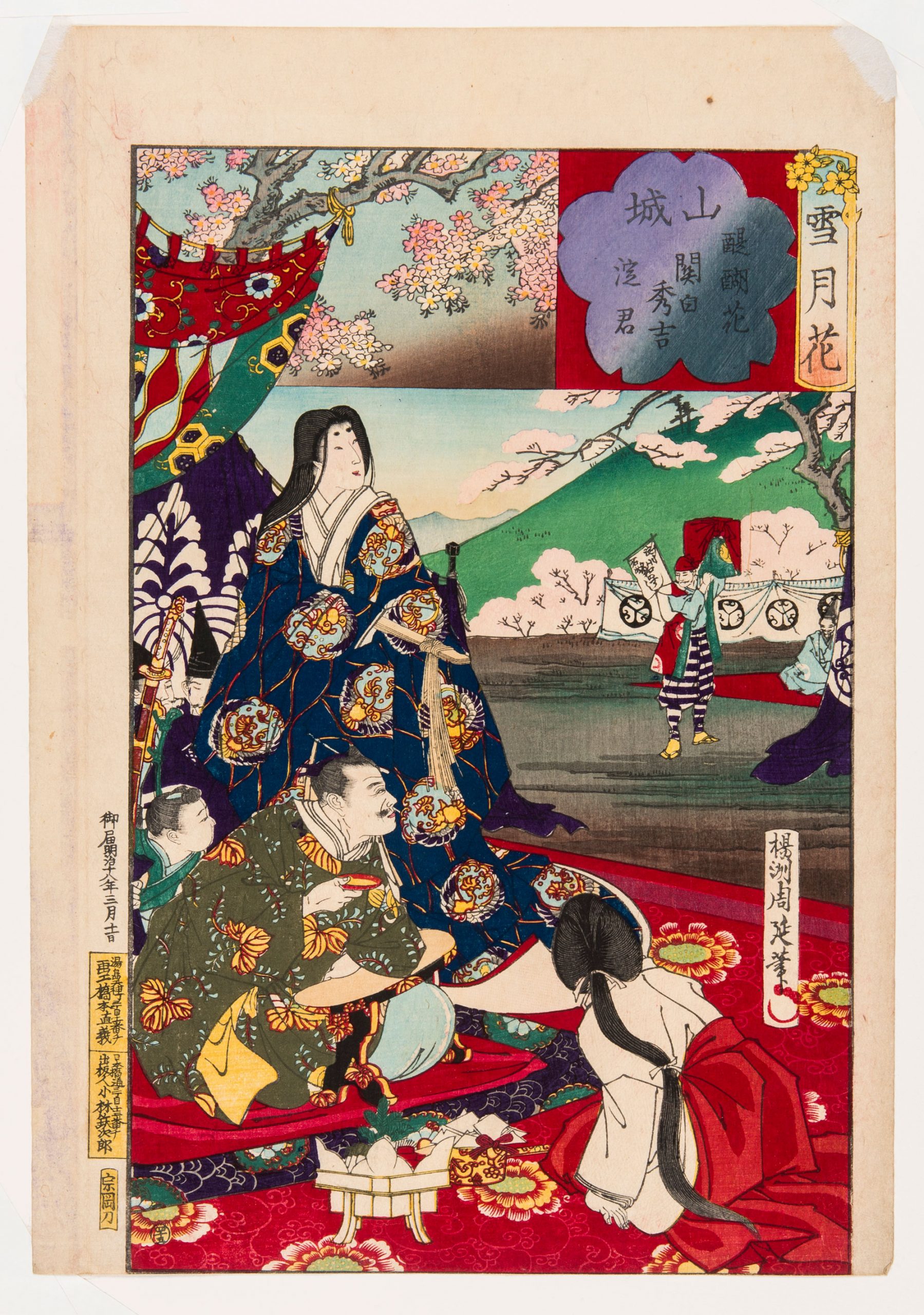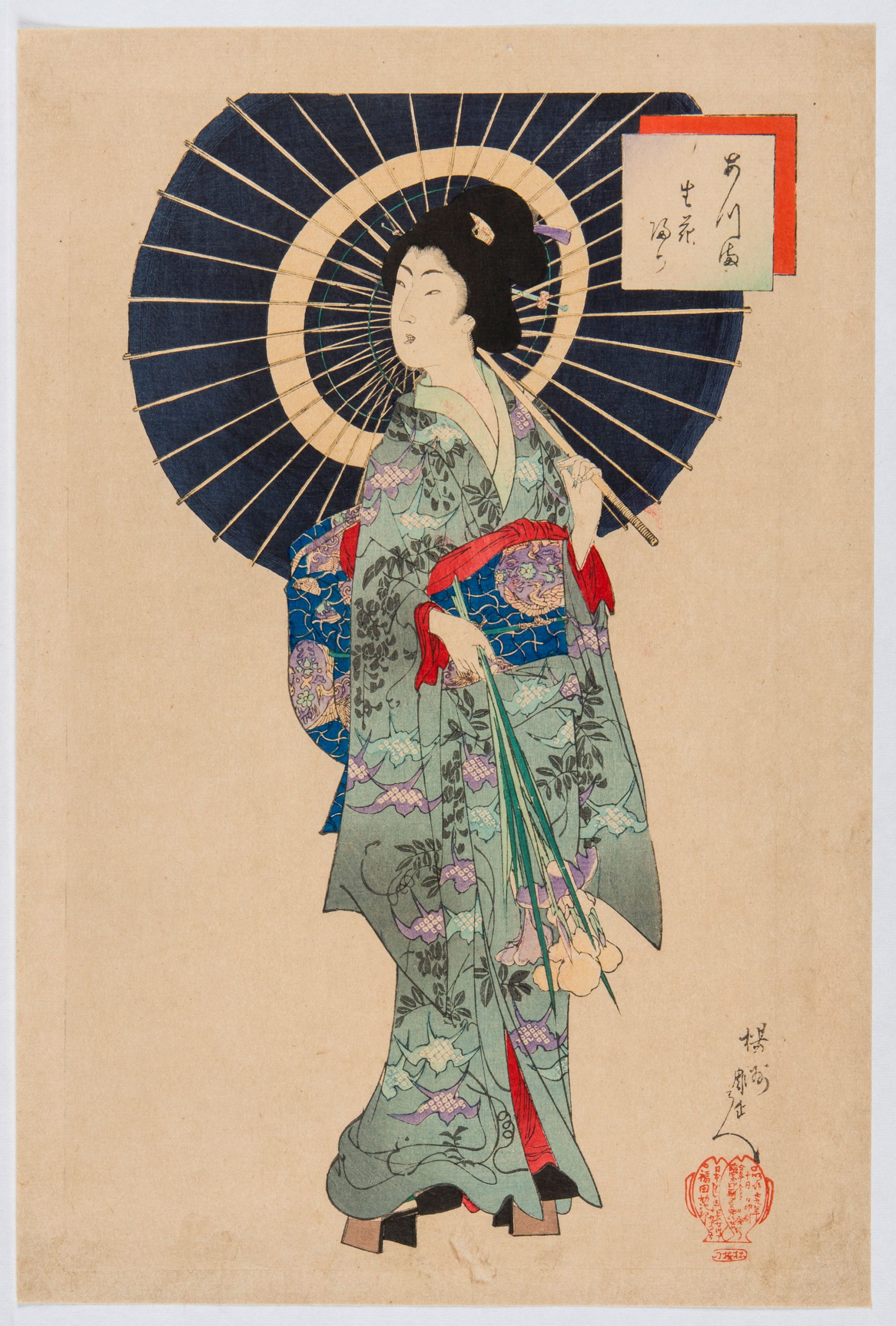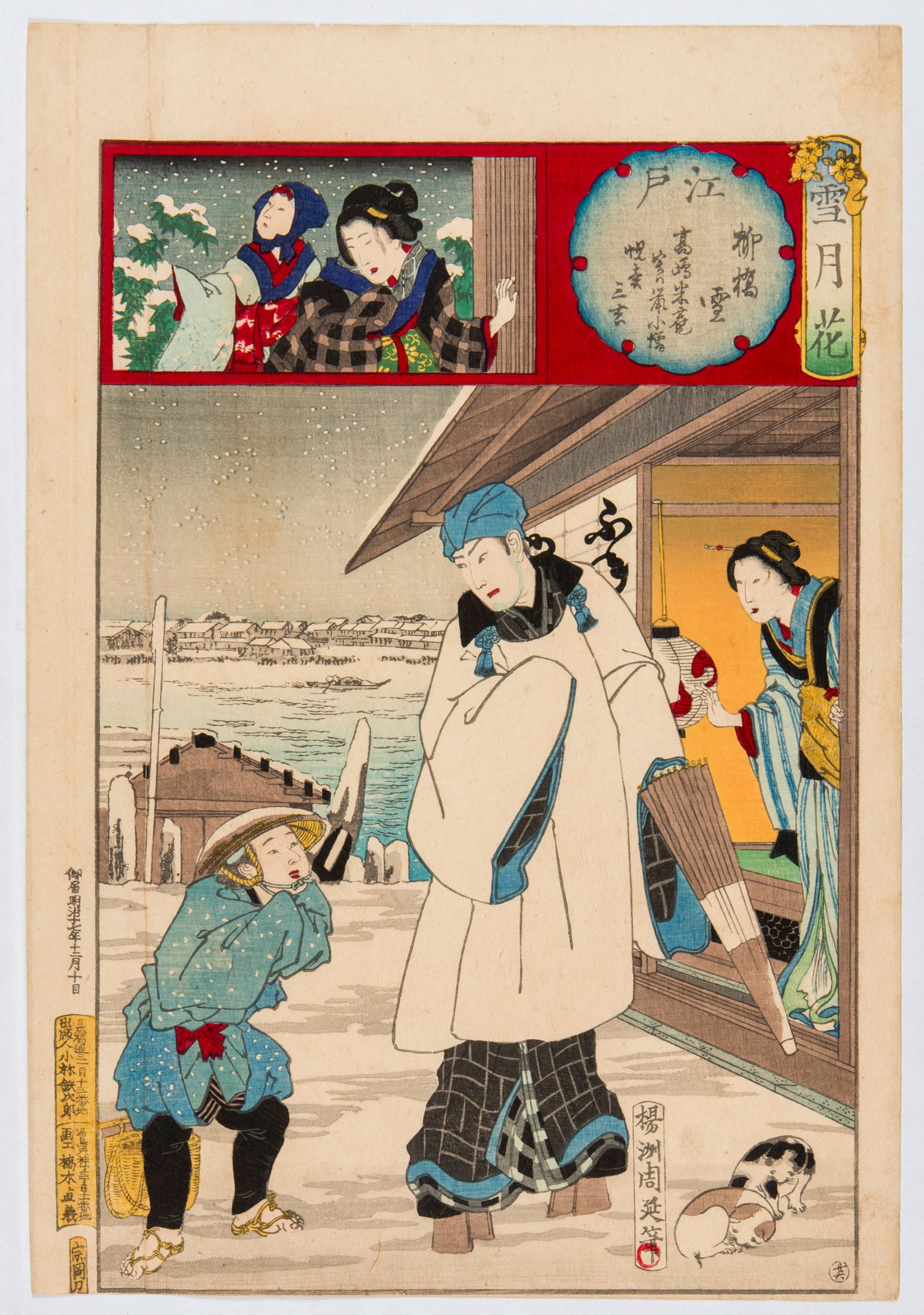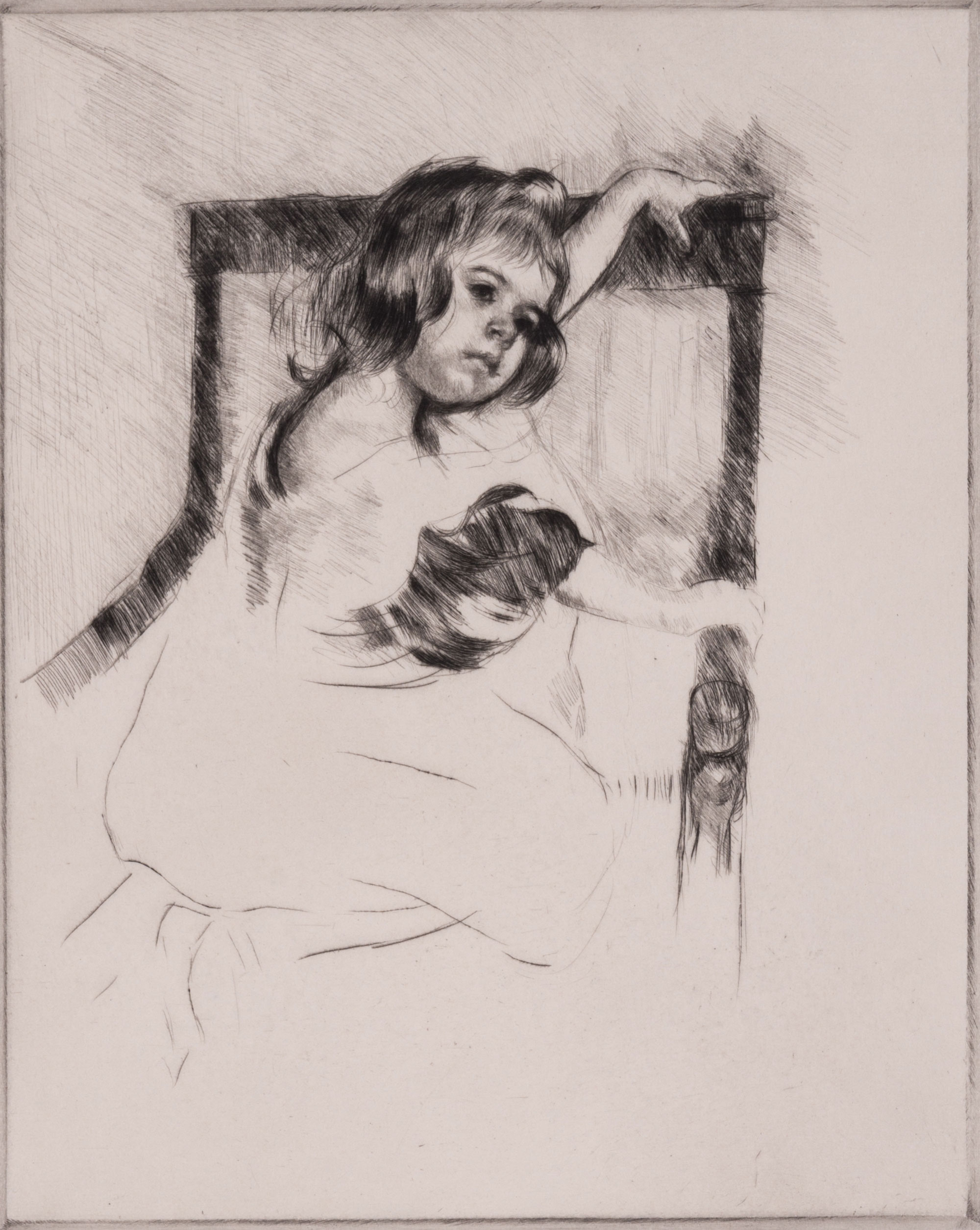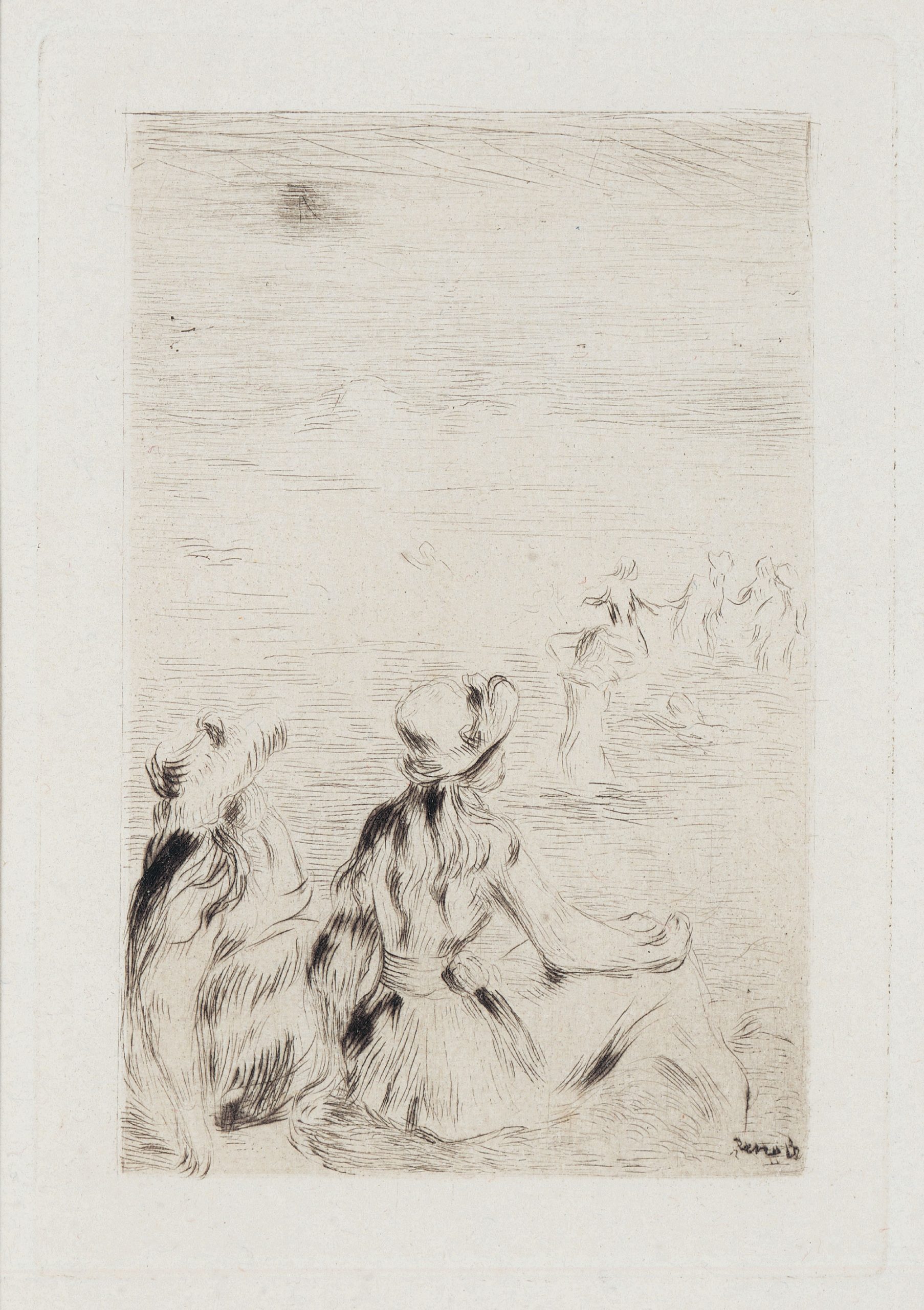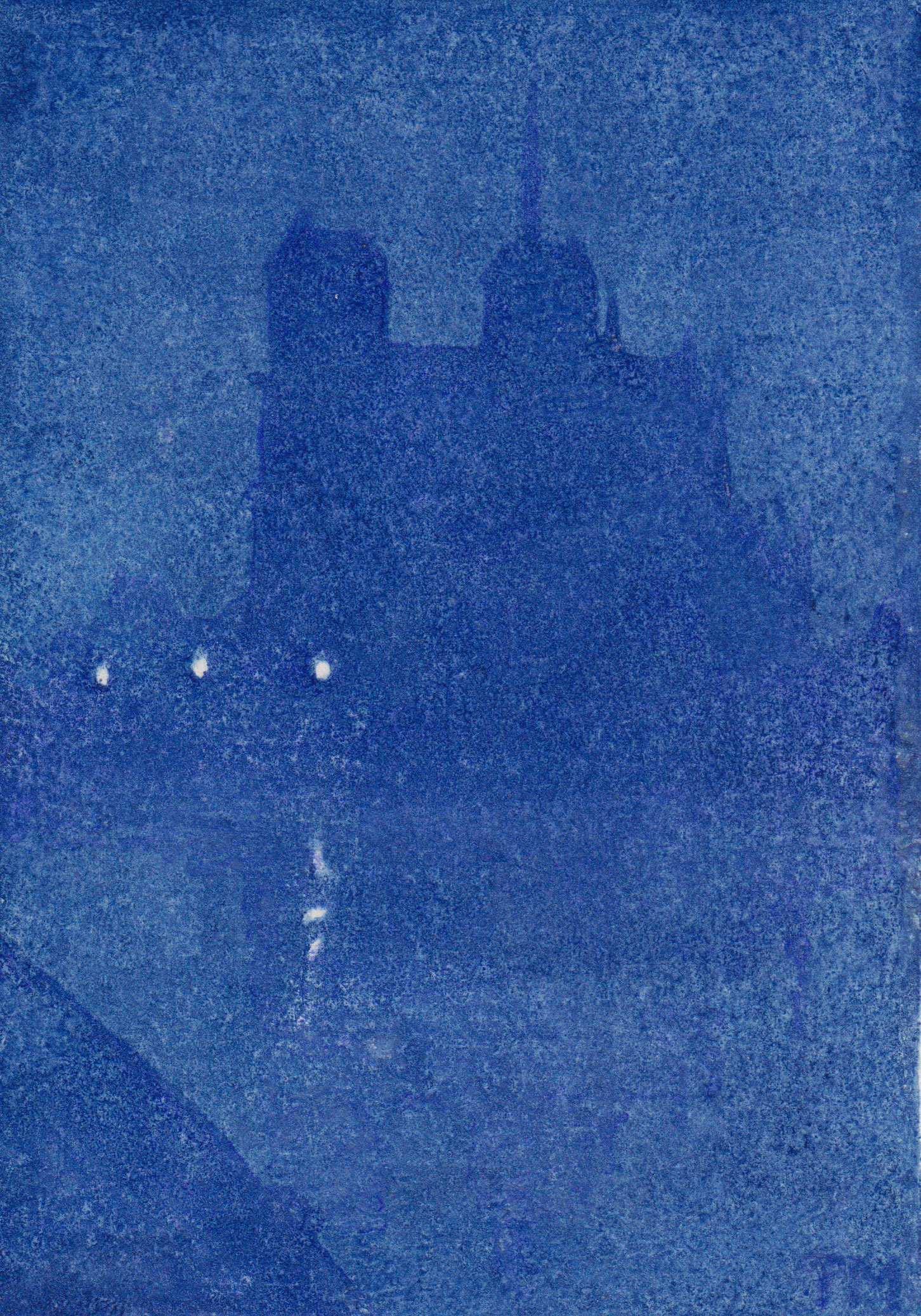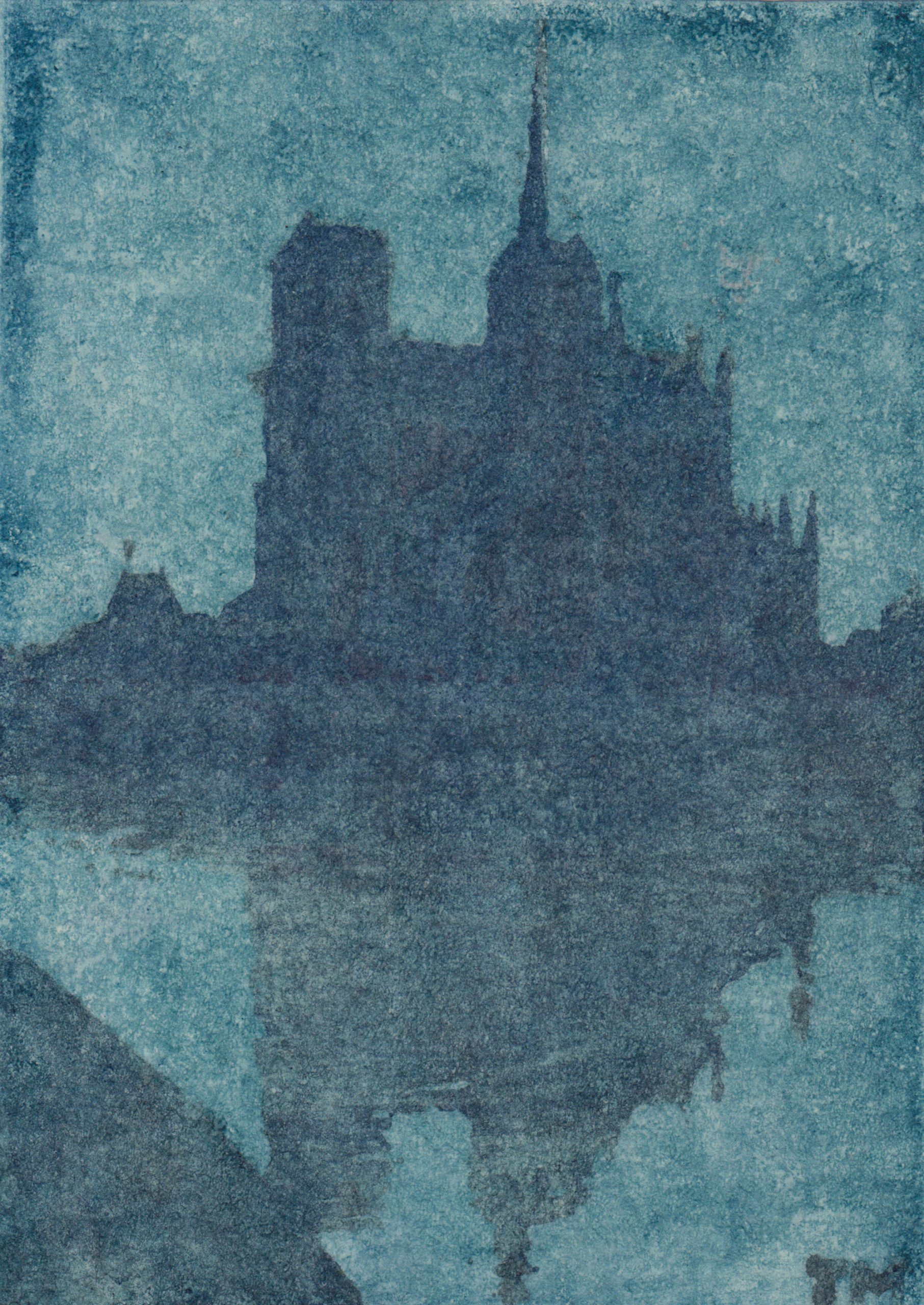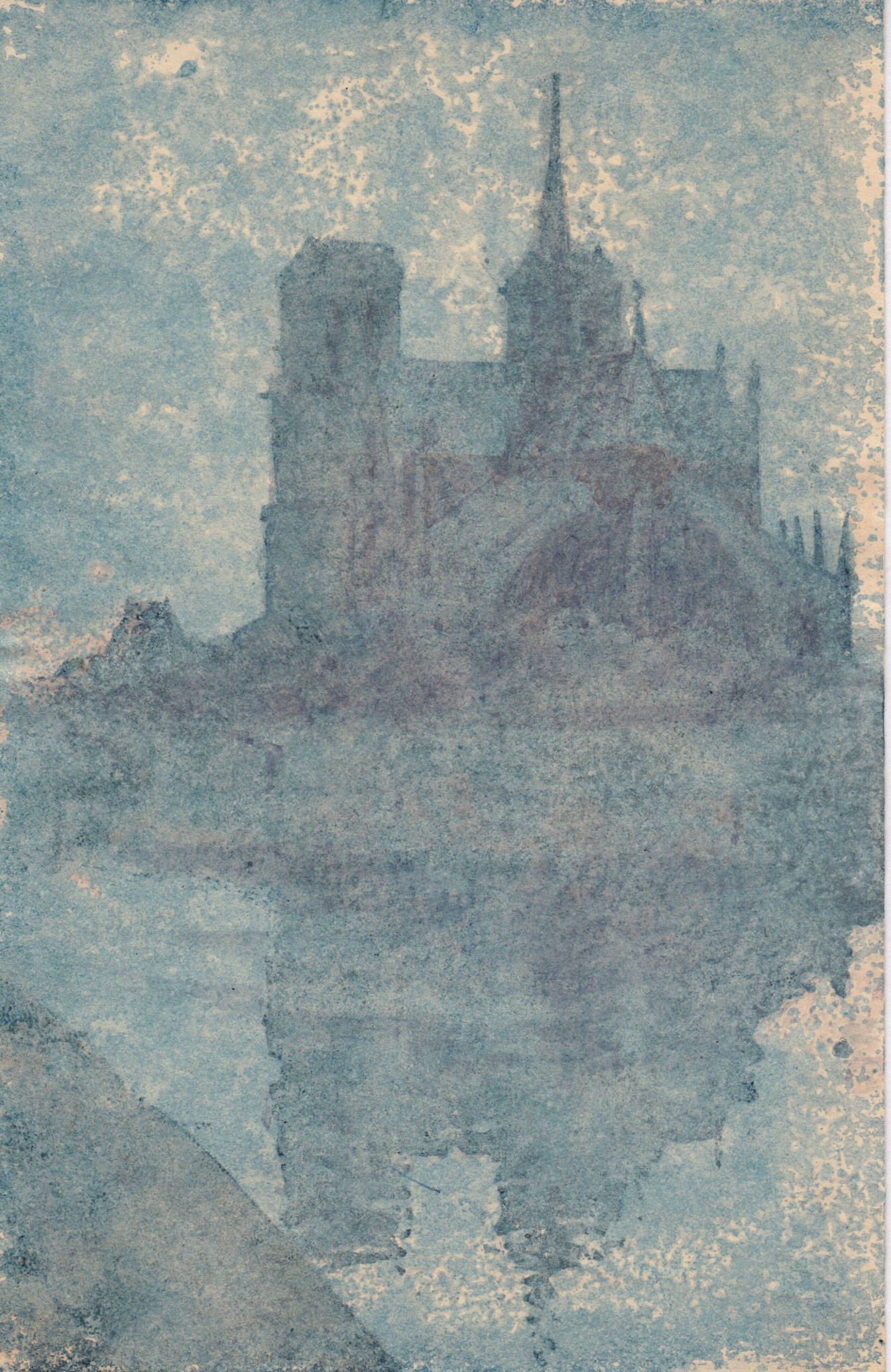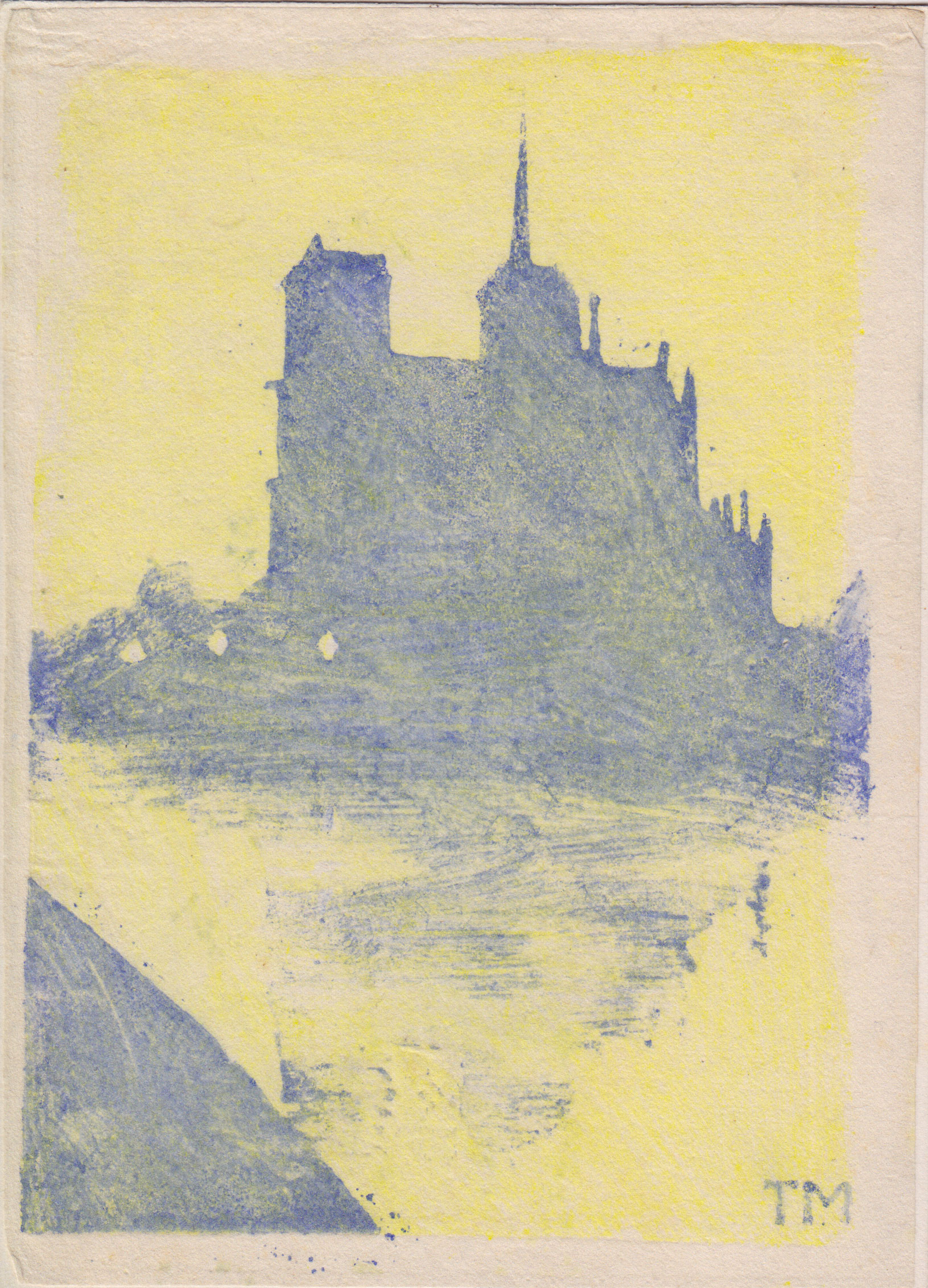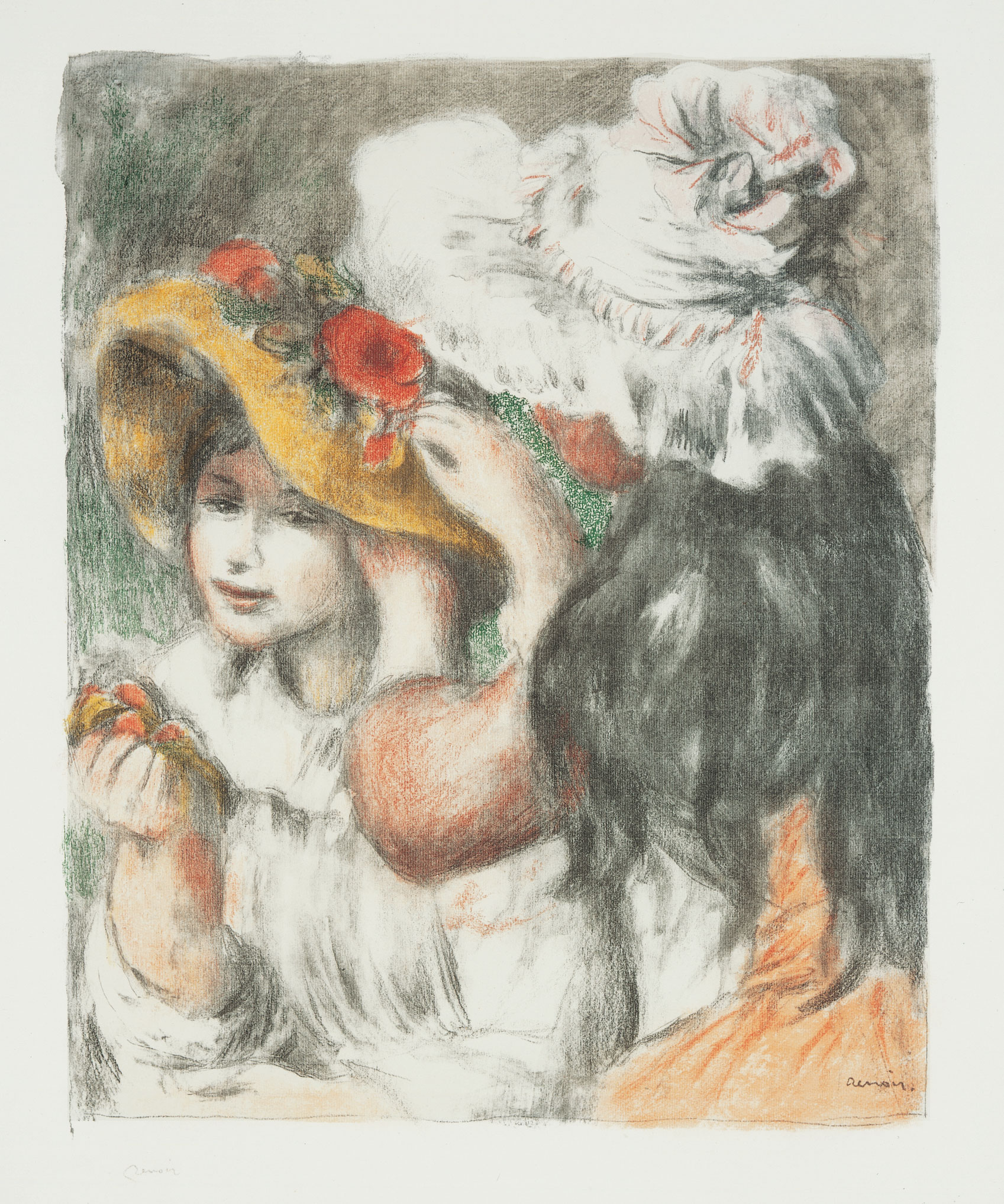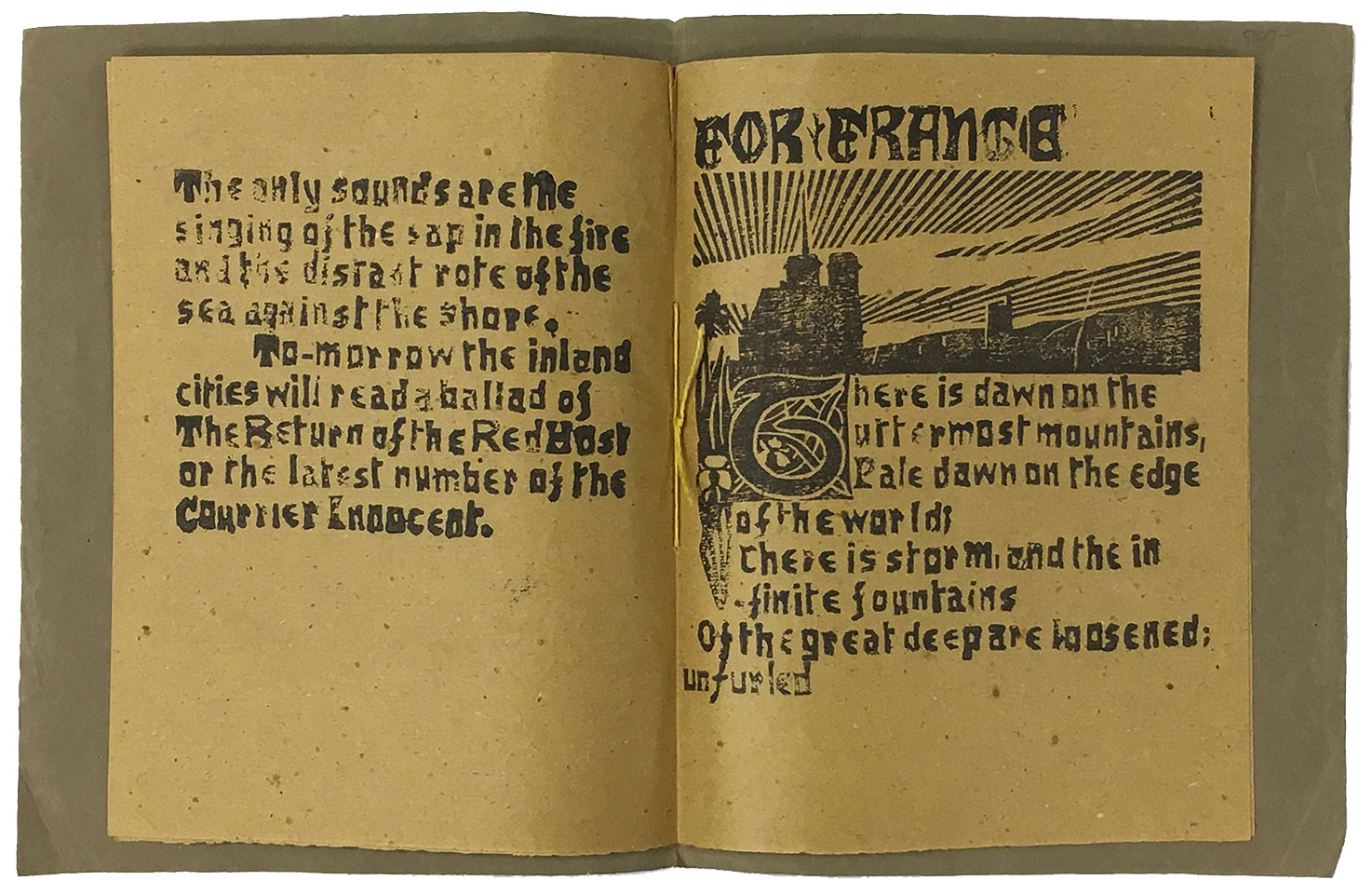Not only are impressionist print designs a translation of the world, but the print process is a translation in and of itself. From carving into a surface to transferring the design onto the paper with ink, artists’ original designs are adapted through intricate steps to create the final pieces seen in this section, utilizing the techniques of drypoint, etching, woodblock printing, and lithography.
In 1853, the re-opening of trade with imperial Japan after over 200 years of isolation, incited Europe’s fascination with Japanese culture. Western artists, including impressionists Claude Monet and Thomas Buford Meteyard, began collecting and exhibiting Japanese woodblock prints, such as the four by Yōshū Chikanobu included in our exhibition. Artists in both regions were interested in representations of nature and momentary scenes, but they approached this common subject with drastically different styles. By bringing these objects together, the viewer can see different line qualities, colors, sizes, and stylistic priorities as artists leveraged these media to translate their individual perceptions.
